Kintsugi
— emotional healing kit
[ summary ]
Interactive kit crafted to help people process and heal from heartbreak through guided self-reflection. Inspired by the Japanese art of Kintsugi — repairing broken pottery with gold to highlight imperfections rather than hide them — this project reimagines design as a tool for emotional well-being. Kintsugi is designed to support people to face their feelings, positively learn from them, and move on.
overview —
[ your process, guided ]
Four decks of cards prompting psychological exercises, each focused on a healing stage: Know Yourself, Accept, Express, and Learn.
[ your experience, shared ]
Record and receive anonymous audio to share the healing journey, fostering a sense of connection and community during the process.
[ your healing, visualized ]
Each deck reveals a totem piece, symbolizing the Kintsugi philosophy of embracing imperfections while representing the process of rebuilding yourself.
[ design opportunity ]
Romantic heartbreak is an emotional wound that often goes unaddressed. It can lead to emotional distress, sadness, loss of self-esteem, and even physical pain. This project explores how design can support people who experience a difficult romantic heartbreak, to face their feelings, influence their psychological well-being, and assist them in self-healing.
skip the design process 🡒
research —
[ context ]
This project was born out of my personal experience with heartbreak, which made me realize how challenging emotional healing can be. I wanted to design a tool that would not only help me process my emotions but also support others in their journey to rebuild and heal from similar pain.
[ first approach ]
As a starting point, I explored the painful side of love through a brainstorming session, focusing on heartbreak and its deep emotional impact. This helped uncover and understand how people currently search for support when they feel lost, hurt, and struggling to move on.

[ psychologist interview ]
I consulted a psychologist [Jennifer Mora] who provided insights into the theory of love and its emotional impact on heartbreak. Her guidance helped shape prompting questions for user research interviews, ensuring a deeper understanding of the healing process.
[ finding interviewees ]
I posted an Instagram story asking who was willing to share their heartbreak stories, expecting only a few responses. To my surprise, over 50 people answered, revealing how deeply this topic resonates and reinforced my overall idea of the need for a space where emotions can be shared and processed.
[ my first insight ]
I conducted over 20 interviews and felt mentally drained in the best way, absorbing each heartbreak story. Seeing my calendar fill up with interviews, I reached my first conclusion: people are willing to talk about heartbreak.
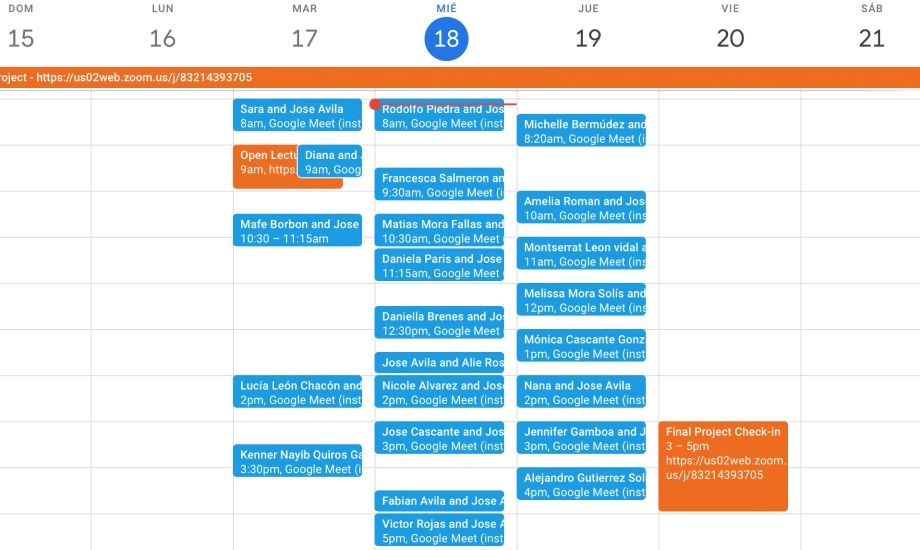
[ interviewing broken hearts ]
Listening to personal experiences and deep reflections confirmed the emotional depth of this project. This allowed me to collect a huge amount of information, connecting real experiences to the psychological theories I previously discussed with the psychologist.
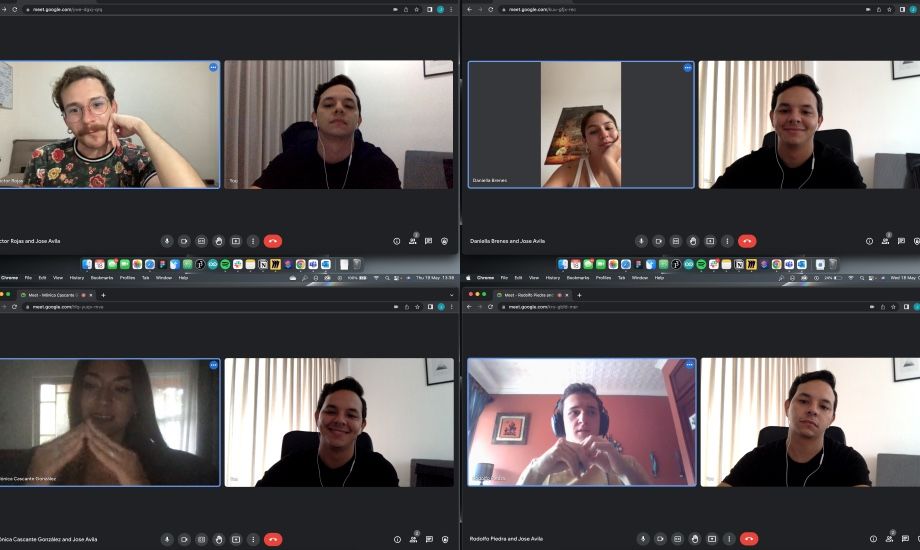
[ key insights ]
The interview uncovered key insights about how people experience and process heartbreak. These findings shaped the foundation of the project, highlighting emotional needs that design could help to address.
— People tend to find a way to run away from their feelings instead of facing them.
— People tend to try to overcome heartbreak by themselves instead of seeking professional help.
— The feelings of sadness from heartbreak are not easy to share with people around you.
— People compare the heartbreak aftermath to a grieving process instead of a healing process.
ideation —
[ brainstorm & ideation ]
I did several rounds of brainstorming and ideation around four key insights from the interviews. This helped me develop solutions that directly address the emotional challenges of heartbreak.

[ 4 clusters, 4 ideas ]
After multiple rounds of filtering and idea curation, I ended up with four clusters of ideas. These clusters formed the foundation for prototyping potential solutions, marking the start of the design concept.
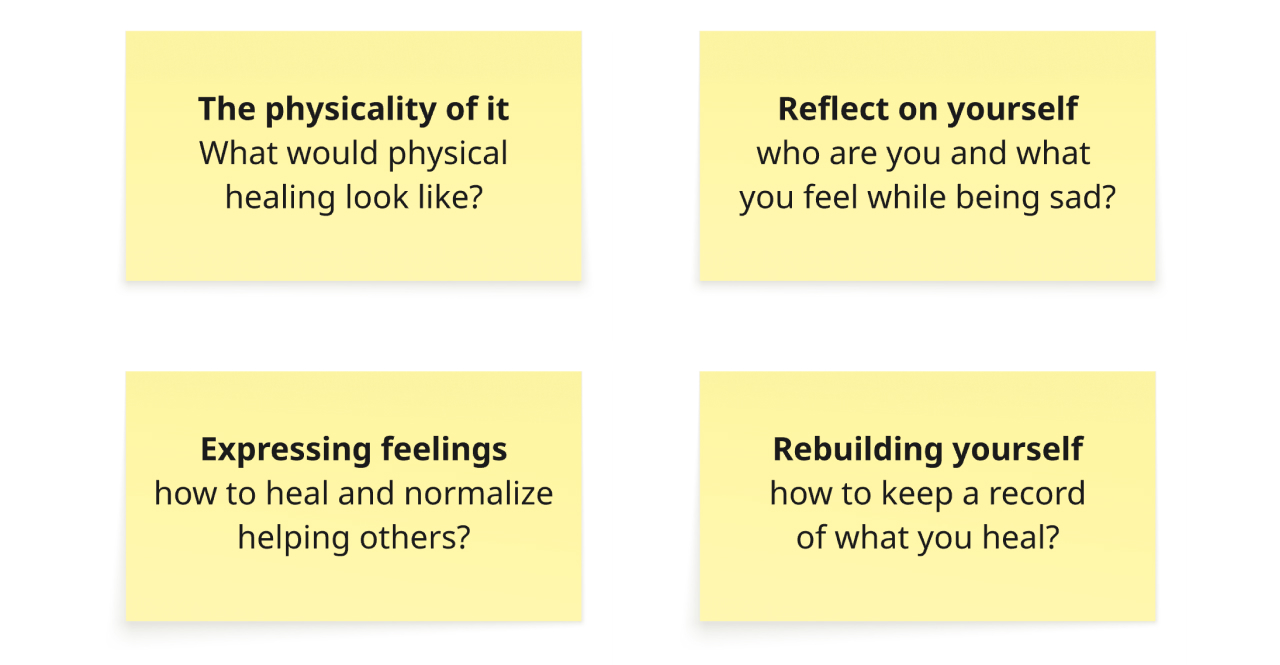
[ 4 prototypes ]
I created four different quick concepts to test various approaches and identify the most effective solutions for addressing these emotional challenges.
Smart tattoo — Visual scar to focus on visually healing the emotional pain.
Help hotline — Phone to talk to an anonymous person and express your feelings.
Kind mirror — Mirror that helps you be kind to yourself while you reflect on your emotions.
Self-love cards — Cards that help you with self-love and motivation through that process.
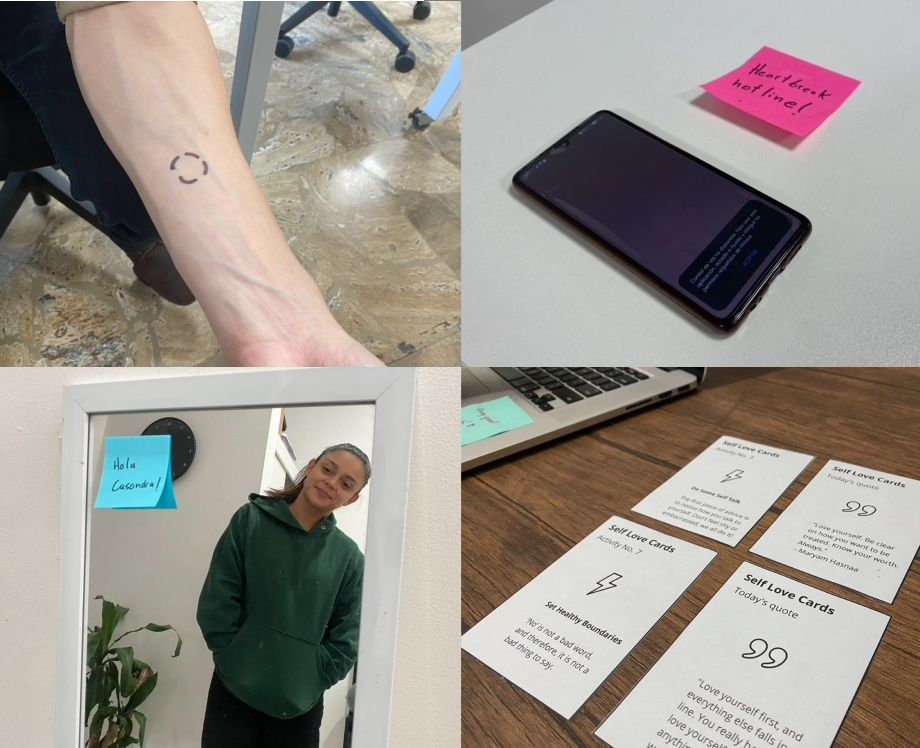
[ eureka moment! ]
I brought these ideas to the psychologist to clear my head and determine the best approach. To my surprise, she pointed out that the concepts closely matched key steps in the psychological theory of grieving. This unexpected connection gave me a clear direction of where I wanted to take the final concept.
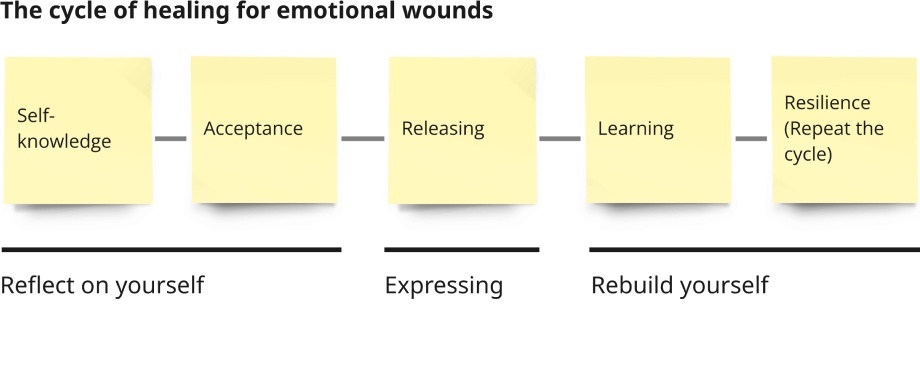
[ incorporating kintsugi ]
While researching grief and emotional wounds, I came across the Kintsugi philosophy, which views breakage as part of an object’s history. This concept resonated deeply with the healing process, as Kintsugi beautifies scars instead of hiding them. I decided to incorporate this philosophy as a visual concept, symbolizing emotional recovery through the metaphor of repairing brokenness.
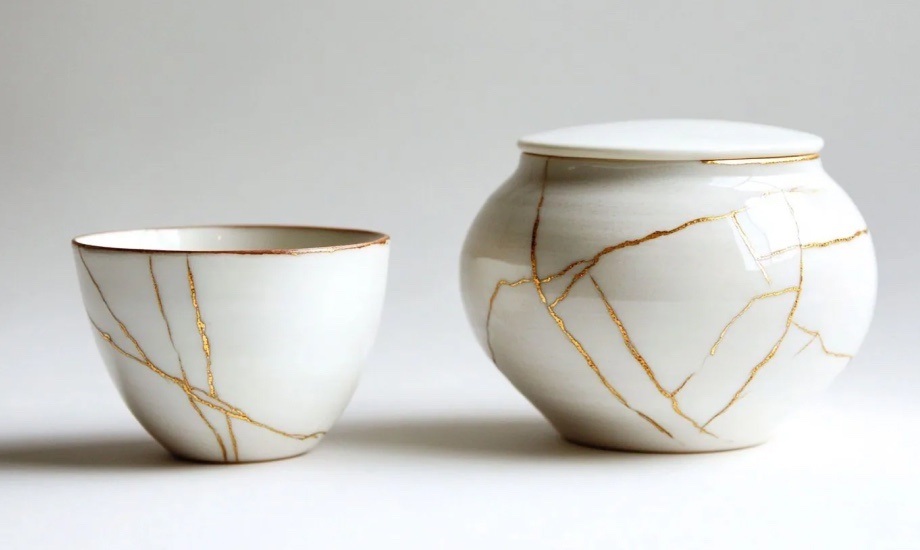
[ final concept — a bit of everything ]
I decided to merge the four clusters into one final concept, combining the best elements of each. The final idea focused on a physical product that users could interact with to visually show their progress, complemented by cards that guided them through the healing process. Additionally, the product allowed users to share their experiences anonymously with others, fostering a sense of connection during the healing journey.
testing —
[ testing the concept ]
I tested the concept multiple times using low-fidelity prototypes to explore the engagement of the cards, the symbolism of the totem, and the metaphor of repairing. These iterations helped refine the user experience and ensure that the design effectively conveyed emotional healing and progress.
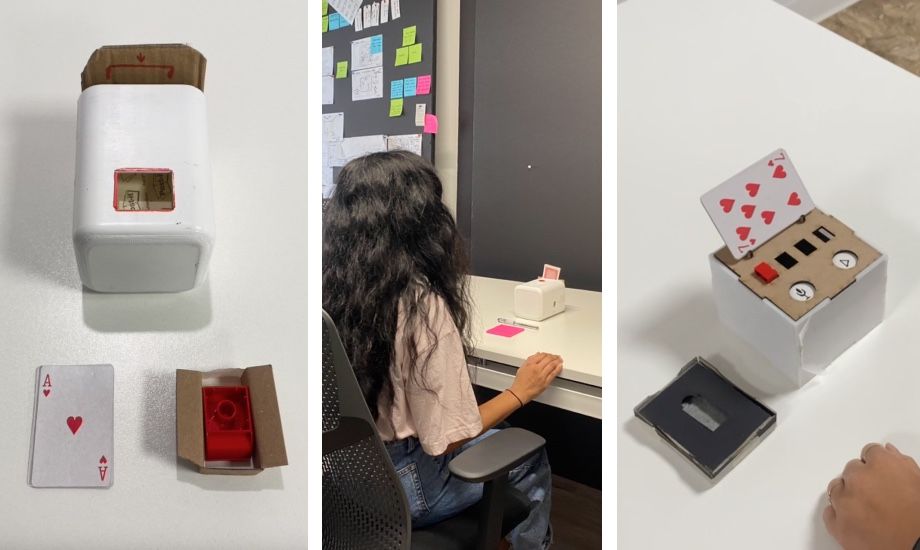
[ back to product design ]
I tapped into my product design skills to create a beautiful and engaging design that resonated with the core concept. Before creating the final prototype, I carefully refined every detail: the totem, the cardholder, and a meaningful design of the "scar," ensuring all elements visually supported the emotional journey.
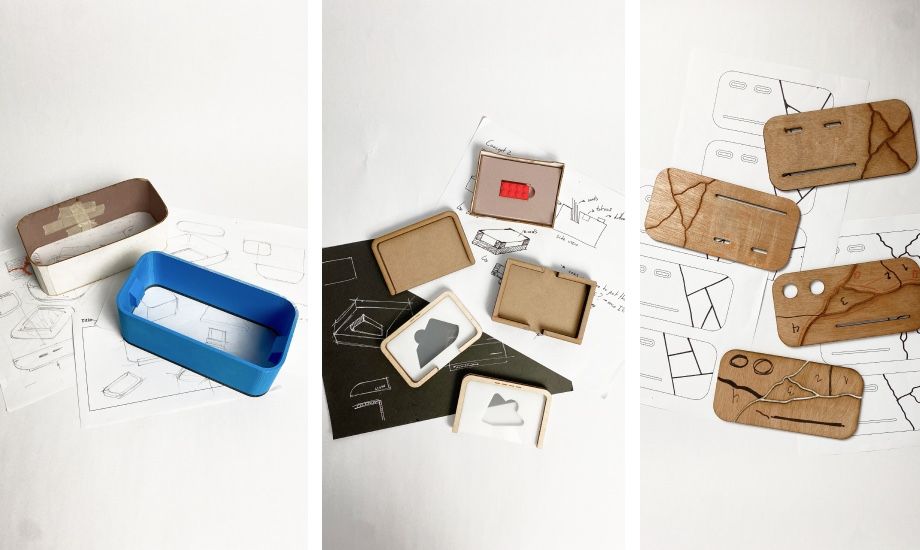
[ build, test, repeat! ]
Building the final physical object involved a lot of testing and repetition to perfect every detail. The totem needed to house the electronic parts inside, and I even went as far as melting metal to create custom buttons, making sure the design was both functional and aligned with the concept.
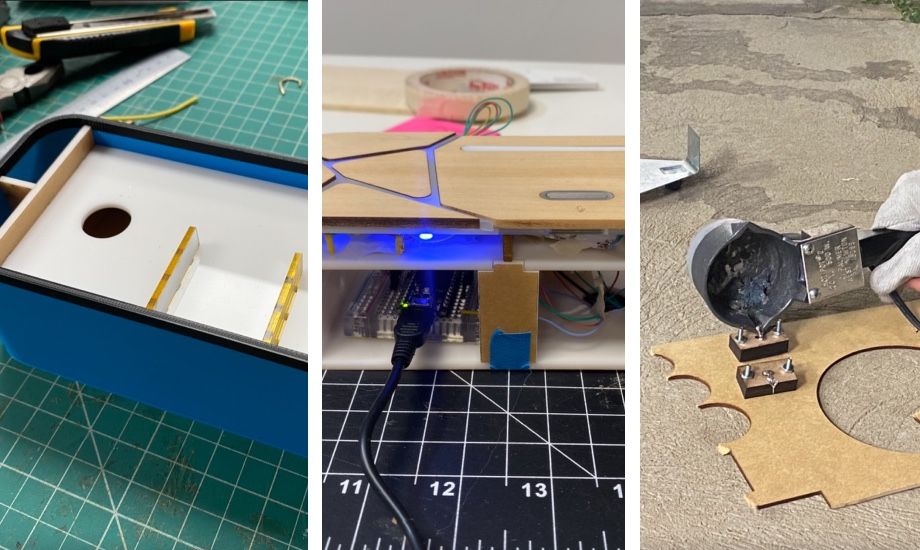
[ final concept validation ]
I collaborated with the psychologist to create all the cards and exercises, ensuring each prompt was rooted in real therapeutic principles. Once the final prototype was complete, I conducted testing to ensure the experience was engaging, meaningful, and aligned with the healing journey I envisioned. Seeing the concept come to life and resonate with others confirmed the power of design in supporting emotional healing.
final result —
[ overall concept ]
The final design combines a product with cards that guide users through psychological exercises, allowing them to reflect, release, and heal. The experience is a journey of emotional recovery, with each step visualized through a symbolic totem that repairs itself, symbolizing growth and healing.
[ a guided process ]
The cards serve as a structured guide to help users process their emotions through a series of psychological exercises. Each card prompts specific actions, such as writing, recording, or reflecting, encouraging emotional expression and release. This guided process is designed around the 4 steps of healing: Know Yourself, Accept, Express, and Learn.

[ your physical companion ]
Each deck of cards reveals a piece of the totem, gradually bringing it back together symbolizing emotional progress. At the same time, the totem acts as a "box of secrets," allowing users to anonymously share and receive recordings of their experiences. This exchange fosters a sense of connection, reminding users that they are not alone in their healing process.
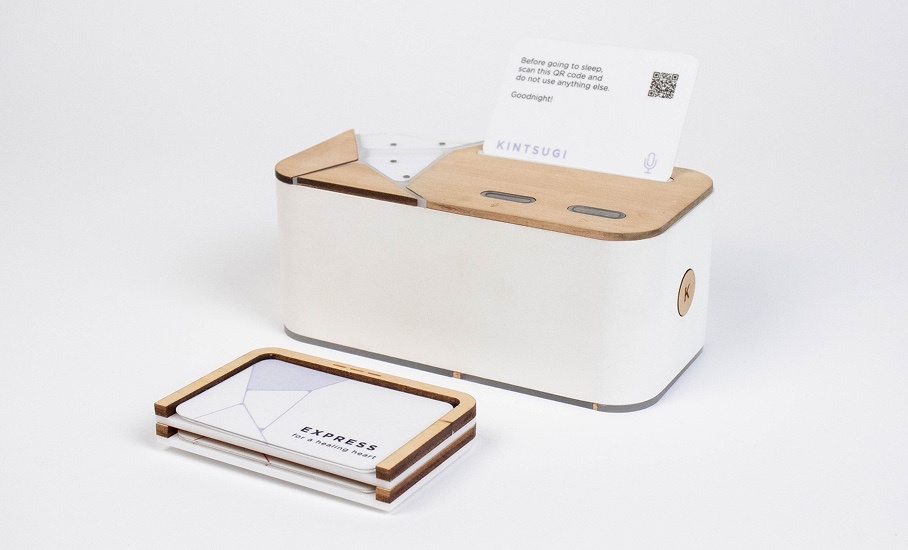
[ a new light ]
After completing the healing journey, the totem transforms into a lamp, symbolizing the light that comes from overcoming pain. The lamp not only serves as a functional object but also as a constant reminder of the strength found in recovery, symbolizing both personal growth and the beauty of embracing emotional scars.

[ details ]
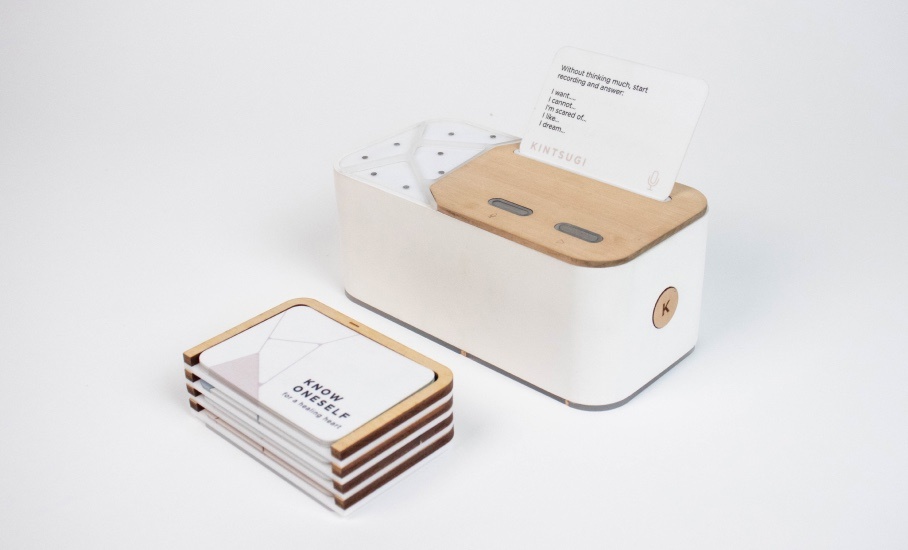

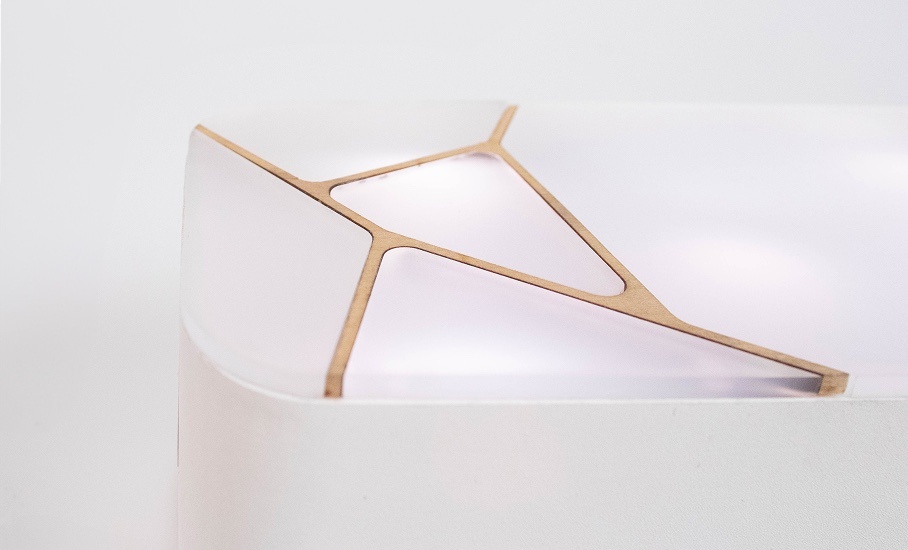
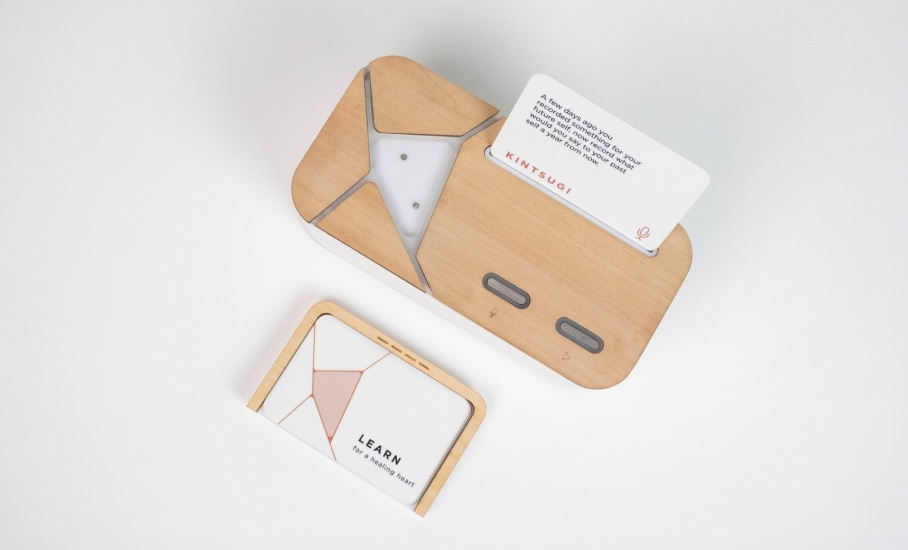
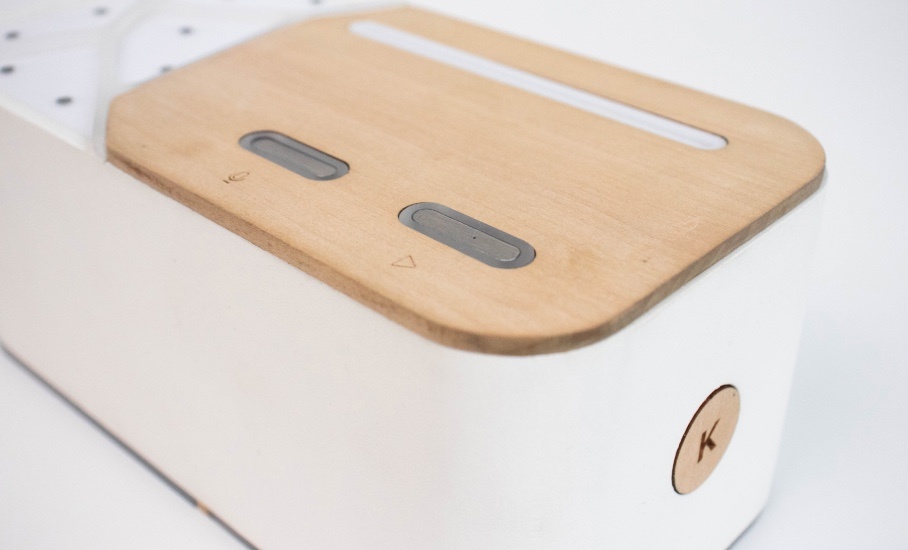
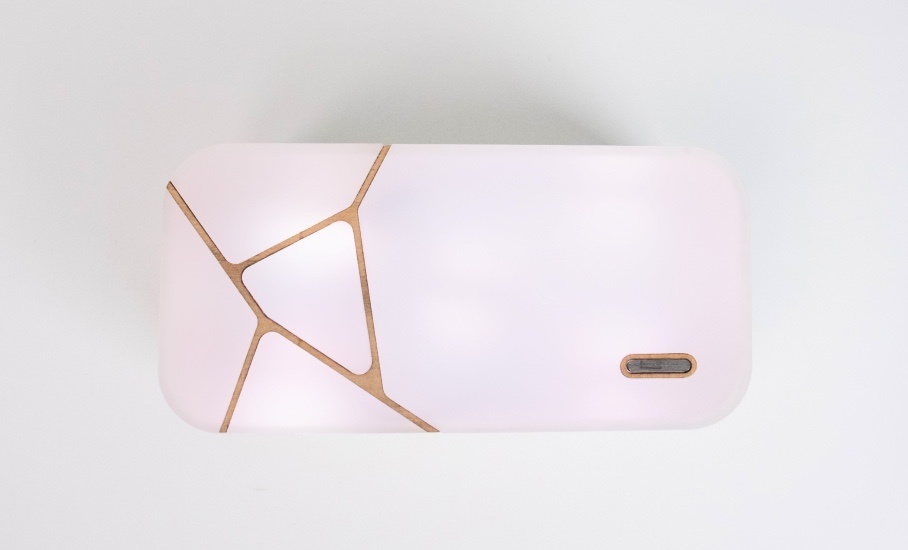
[ final thoughts ]
This project started as a personal journey in which I tried to heal my own heart. The final result demonstrates the power of design to meet deep emotional and psychological needs. It redefines the boundaries of what design can achieve by addressing user interaction and supporting personal growth and emotional well-being. Through this work, I aim to expand the role of design in shaping healthier individuals, and by extension, a healthier society.